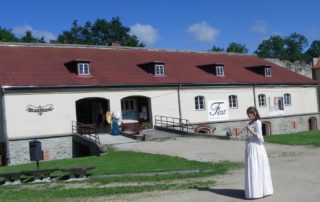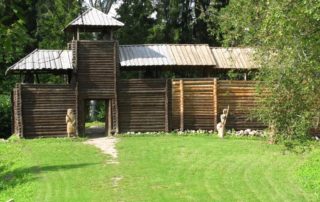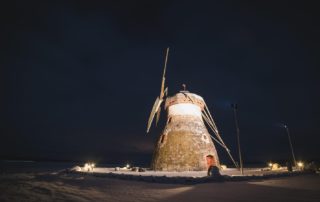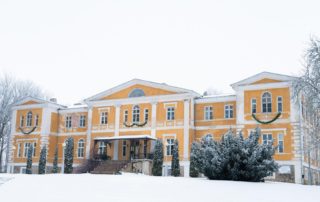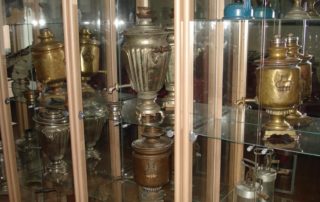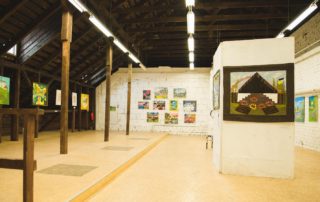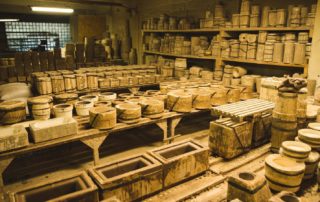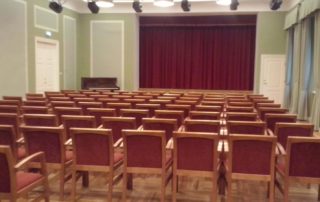Põltsamaa Museum
Põltsamaa Museum is located within the walls of the ancient Põltsamaa Ordensburg. Põltsamaa Museum gives an overview of the glorious past of the stronghold, town and the parish: Interesting facts: During the Livonian War the castle was the residence of the King of Livonia In the 19th century the castle was a Rococo style castle, a flourishing centre of culture and industry.
Kassinurme Hillfort and Sacred Grove
The Kassinurme ancient area was established 1.5 thousand years ago. The sacred grove was discovered when the settlement was established, and it is one of the oldest sacred places in Estonia. A fragment of the ancient fort has been restored. At present the sacred grove is the favourite place for history enthusiasts who organise ancient war games there, revive old folk customs, and celebrate folk calendar holidays. The health trail lets visitors see the varied nature of the region and enjoy beautiful surface forms.
Kuremaa mill
Kuremaa mill is part of the Kuremaa manor complex; the fully renovated mill reopened in 2009. The ground floor is home to a function room with its own fireplace and a sales counter, while the first floor is the perfect place for exhibitions and training events. The second floor hosts an exhibition on the Dutch-style windmills that can be found in Estonia – including its most impressive piece, a model of the Kuremaa windmill. On the third, that is the top floor, you can admire the views over Vooremaa from the narrow windows. The Kuremaa mill is marked with a yellow [...]
Kuremaa Castle and Park
Kuremaa Classicist manor house was built in 1837-1843 by the von Oettingen family. The manor house was designed by the architect E. J. T. Strauss from Tartu. There is also a room for a museum in the castle which gives an overview of the region and of the history of Kuremaa Agricultural School. At present the rooms of the castle are used for organising conferences. The park rich in species descends towards lake Kuremaa which attracts visitors with its well-kept beach and possibilities for taking a rest.
Mustvee Old Believer’s Museum
Mustvee Old Believer’s Museum is one of the 21 places in Southern Estonia worth discovering that are marked by a yellow National Geographic window; all those interested in culture and history should definitely pay a visit. The exhibits give an overview of the culture of Old Believers both in the past and in the present. The collection includes samovars, irons, clothes worn by the Old Believers, commodities, furniture and fishing equipment. Also on display – J. Kolpakov’s paintings of the churches of Mustvee, P. Mihhailov’s and his son’s wood engravings and L. Korobova’s paintings and drawings of Lake Peipus.
Central Estonian Art Gallery pART
Gallery pART is located in the Põltsamaa Castle complex; it is an unheated extreme gallery built in a loft, and as we all know: ART is not afraid of the cold. There is a new exhibition of professional art in Gallery pART every month. Interesting information: the gallery consists of two parts; Gallery pART with contemporary lighting has a total surface are of 200 square metres. Gallery pART was established by the members of Art Society.
Siimusti Clay Industry
Siimusti Ceramics operates from the clay factory, which was founded in 1886 by Joosep Tiimann, a man born from a family of farmers. The location was suitable due to the clay deposits present here. At first the brick manufactury was created; afterwards they started producing oven pots and dishware. Nowadays you can get acquainted with the manufacturing process of ceramics: The pouring of clay into the mold and the firing and glazing processes. The end product can be bought onsite.
Pajusi manor
Pajusi manor was constructed in the 17th century. Its long, stone main building in Classicist style is thought to have been erected in the early 19th century. It was one-storey; only the central section was adorned with a small upper floor, which bears a distinct decorative window. In addition to the main building, the manor as a whole includes a number of other buildings and a large park. Did you know...? *Remaining of the main building of the manor are its central part and right-hand wing, which is home to Pajusi Community Centre

